#tzouvaras
Photo

* by Stathis Tzouvaras http://flic.kr/p/haVYrJ
3 notes
·
View notes
Photo

Karpathos. Olymbos
Photo by Giorgos Tzouvaras
70 notes
·
View notes
Text
Understanding the biological, psychological, and social factors of mental health and the Impact of stigma on the well-being of older adults
Stigmatization: The Biopsychosocial Model
I want to start off by introducing the biopsychosocial model of aging and mental health (Segal et al.,2018). The biopsychosocial model proposes that interrelated biological, psychological, and social factors both positively and negatively influence mental health (Segal et al.,2018). Mental disorders can arise or worsen when an individual is impacted by negative biological, psychological, and social factors (Segal et al.,2018). For example, biological risks such as endocrine and neuroanatomical factors contribute to higher risks of mental disorders such as depression (Fiske, Wetherell, & Gatz, 2009). Furthermore, studies have shown that depression occurs in the context of medical illness meaning that those with a chronic medical illness often experience depression due to a variety of reasons one being due to social isolation (Fiske, Wetherell, & Gatz, 2009). Psychological risk factors that contribute to higher risk of mental health issues also include personality, vulnerability, and resiliency (Fiske, Wetherell, & Gatz, 2009). Social risk factors include lack of social support and a person’s environment (Fiske, Wetherell, & Gatz, 2009).
You may ask, how are such factors related to or important towards the topic of stigmatization and its negative impact on older adults with normal and abnormal mental health problems? My answer is the following: The stereotyping of older adults and stigmatizing of mental health leads to negative biological, psychological and social influences among older adults with normal and abnormal mental health. The stigmatization of mental health and mental disorders in older adults leads to negative psychological influences which include lowered self-esteem, lowered coping strategies, and lowered treatment seeking behaviours (Tzouvara, Papadopoulos, & Randhawa, 2018). Furthermore, the stigmatization of older adults and mental health leads to negative social factors such as discrimination and marginilization. These factors can in turn influence the physical and mental health of older adults.

Let me provide an example in order for you to better understand how biological, psychological, and social factors work together to influence mental health issues in older adults and how stigmatization plays a role in such action.

I’d like you to meet Stacy. Stacy was born in 1932 during the midst of the great depression. At 87 years old, she has lived through the second world war and watched the first man to walk on the moon. She has lived through the advancement of many technologies such as TVs, computers, telephones, and much more. Her experiences over the years have made her who she is today. Unfortunately, Stacy has recently lost her husband of 40 years. Her children live far away but try to visit when they can. A recent fall not too long ago caused Stacy to need hip replacement surgery and she has been struggling to walk properly ever since. Due to her husband's passing and her limited mobility Stacy becomes socially isolated and feels persistent sad and anxious. She feels tired all the time and feels worthless, and starts to lose interest in activities she had found pleasurable. She is aware that depression runs in her family but during a get together at her neighbours house, Stacy overhears the neighbours talking about their disinterest in Jeff, who is a 55 year old neighbour battling PTSD and an addiction issue. The neighbours share uneducated and false preconceived notions and stereotypes of Jeff and his mental illness, and mention the reason why Jeff is excluded from get togethers is because of his mental health issues. This experience makes Stacy feel very upset, and although she had been willing to go visit her doctor and inform her doctor about her struggles, after such interaction with her neighbours she decides she will no longer visit her doctor or tell him about her mental and physical issues because she does not want her neighbours to view her and talk about her like they did about Jeff. She also does not want to be excluded from social get togethers, as she feels socially isolated and lonely due to her situation. Unfortunately, a consequence of not seeking out treatment for her physical and mental health issues means that she won’t get the care she needs and her condition will only further deteriorate which may lead to a poorer quality of life and even an earlier mortality rate.
Stacy’s story above indicates how biological issues (history of depression in her family and her mobility limitations), psychological issues (her grief and struggle with the coping of her husband’s death), and her social environment (losing social interactions due to individuals stereotyping and stigmatization of people with mental health issues) can simultaneously work together to influence Stacy’s health seeking behaviours and mental health issues which in turn impact Stacy’s physical and mental health and well-being.
Before I end this post, I do want to elaborate more on an aspect that I had mentioned in Stacy’s situation and it is about the ability to stay active and the influence stigmatization of mental health issues has on the activity levels of older adults with or without mental health issues.
Before I do so I’d like to make a joke since you've probably been doing a lot of reading. Would you like to hear a pizza joke? Never mind, it’s pretty cheesy.Hope that gave a good chuckle, if it didn’t then it’s a good thing I’m doing a Masters of Science in Aging and Health and not a Masters in Comedy.
Stigmatization: Activity Theory Not Disengagement Theory
I want to emphasize that the stigmatization of mental health and mental disorders in older adults can lead to social isolation due to social exclusion brought upon by prejudices. Those who suffer from mental illnesses withdraw from social interactions due to fear of negative reactions which leads to diminished participation in society. As the activity theory of aging highlights it is important that older adults stay active as it contributes to better physical, mental, and social well-being. It is important for older adults with abnormal mental health problems in particular to remain active in the community as such actions can help with the mitigation of mental health problems and improves physical, mental, and social functioning and well-being. Social inclusion leads to greater social interactions which improves mental well-being. Several studies have recognized the importance of social supports and networks on the overall well-being of older adults. It is our responsibility as a society to ensure that older adults are not marginalized and are not socially excluded because of the stigmatization of mental health problems and discriminatory factors such as ageism. (Whole Paragraph References from Conner et al., 2010; Fiske et al. 2019; Forsma et al., 2013; Homecare Assistance, 2019; Office of the Surgeon General (US), 2001; Segal et al., 2018; Tzouvara et al., 2018).


Sources
Cavanaugh, J.C. & Blanchard- Fields, F.(2015). Adult Development and Aging (7th Edition).Cengage Learning. Stamford, USA.
Conner, K. O., Copeland, V. C., Grote, N. K., Koeske, G., Rosen, D., Reynolds, C. F., 3rd, & Brown, C. (2010). Mental health treatment seeking among older adults with depression: the impact of stigma and race. The American journal of geriatric psychiatry: official journal of the American Association for Geriatric Psychiatry, 18(6), 531–543. doi:10.1097/JGP.0b013e3181cc0366
Fiske, A., Wetherell, J. L., & Gatz, M. (2009). Depression in older adults. Annual review of clinical psychology, 5, 363–389. doi:10.1146/annurev.clinpsy.032408.153621
Forsma, A.K. Herberts, C. Nyqvist, F., Wahlbeck, K. & Schierenbecks, I. (2013). Understanding the role of social capital for mental wellbeing among older adults. Aging & Society. 33. 804-825. doi10.1017/So144686X12000256
Homecare Assistance. (2019). Addressing the Stigmas of Ageism and Mental Health.Retrieved from https://homecareassistance.com/blog/addressing-stigmas-ageism-mental-health
Office of the Surgeon General (US); Center for Mental Health Services (US); National Institute of Mental Health (US). Mental Health: Culture, Race, and Ethnicity: A Supplement to Mental Health: A Report of the Surgeon General. Rockville (MD): Substance Abuse and Mental Health Services Administration (US); 2001 Aug. Chapter 2 Culture Counts: The Influence of Culture and Society on Mental Health. Available from: https://www.ncbi.nlm.nih.gov/books/NBK44249/
Segal,D., Qualls, S.H.,& Smyer, M.A. (2018). Aging and Mental Health (3rd Edition). Wiley-Blackwell Publishers: Cambridge, MA.
Tzouvara, V. Papadopoulos, C. & Randhawa, G. (2018) Self-Stigma Experiences Among Older Adults with Mental Health Problems Residing in Long-Term Care Facilities: A Qualitative Study, Issues in Mental Health Nursing, 39:5,403-410, DOI: 10.1080/01612840.2017.1383540
U.S. Department of Health and Human Services Substance Abuse and Mental Health Services Administration, Center for Mental Health Services. (2005). Mentally Healthy Aging: A report on overcoming stigma for older Americans. Recommended Citation: Mentally Healthy Aging: A Report on Overcoming Stigma for Older Americans. DHHS Pub. No. (SMA) 05-3988. Rockville, MD: Center for Mental Health Services, Substance Abuse and Mental Health Services Administration, 2005
World Health Organization and World Psychiatric Association. (2002). Reducing stigma and discrimination against older people with mental disorders. WHO-WPA. Retrieved from: https://www.who.int/mental_health/media/en/499.pdf
0 notes
Link
Raging wildfires have killed at least 74 people and injured scores more as flames swept through a small resort town near Athens. Emergency crews found one group of 26 victims, including families with children clasped in a last embrace as they tried to flee the flames. They were huddled together in a field just 30 metres from the sea near Mati in the region of Rafina, eastern Greece. Nikos Economopoulos, head of Greece's Red Cross, told Skai TV: "They had tried to find an escape route but unfortunately these people and their kids didn't make it in time. Instinctively, seeing the end nearing, they embraced." Interior Minister Panos Skourletis described the wildfires as a "Biblical disaster", according to The Times, and said rescue workers were "still searching to see if there are more missing", while mayor of Rafina Evangelos Bournous told the channel: "The number of dead is rising." Ferocious fires came all the way into the towns, meaning the only safe direction for people to flee was towards the sea where hundreds of people had to be rescued in local fishing boats. Greece wildfires gallery puff Government spokesman Dimitris Tzanakopoulos said early on Tuesday that Greece had requested US drones "to observe and detect any suspicious activity" after "15 fires had started simultaneously on three different fronts in Athens". "I am really concerned by the parallel outbreak of these fires," Prime Minister Alexis Tsipras said, with officials raising the possibility they could have been started deliberately by criminals out to ransack abandoned homes. Is it safe to travel to Greece? The fire was by far Greece's worst since flames devastated the southern Peloponnese peninsula in August 2007, killing dozens. It broke out in Mati late Monday afternoon and was still burning in some areas on Tuesday morning. Greece wildfires | Travel advice Cecily, 44, from Paris, on holiday with her 15-year-old daughter told The Telegraph: “We were staying in a holiday villa in Mati. We saw the fires outside the house and jumped in our hire car and drove towards the beach. "There were about 500 people crammed onto the beach. There were no warnings and no help from authorities. The local Greek people came to rescue us in their fishing boats. "We got in one then were picked up by a military boat which took us to Rafina. All the hotels were full so we slept in the hallway. We booked a flight back to Paris today. We have had no help from anywhere.” Another French tourist Paulina Corvisier, 25, from Lyon, on holiday with her husband and mother-in-law, said: “We ran to the beach. We were all crowded onto the sand and rocks. Then the trees surrounding the beach burst into flames. "I jumped in the water because I didn’t know what else to do. Ash was falling on me from the sky while I was in the water.” Coastguard vessels were combing beaches to find any remaining survivors, with military hospitals on full alert, a government spokesman said. Dozens of people flee to the beach in Matiq Credit: Blitz Pictures Mati is in the eastern Rafina region, a popular spot for Greek holiday-makers, particularly pensioners and children at camps, 29 km (18 miles) east of the capital. Haris Malimagolou from the Red Cross, talking of the harrowing discovery of the 26 victims found together, said: “Some members of our team found 26 bodies in a field next to the sea, we are assuming they were trapped by the fire because it was so strong and so fast. Some were huddled together as if trying to protect each other. "They were badly burned and have not been identified yet. Their bodies have been transferred to Athens.” He explained that the fire was so devastating because a separate fire at Corinth - some 68 miles from Mati - started earlier at 11am, so all the fire service resources were sent there. This region is also very densely populated with a lot of summer houses, old people and children. Mr Malimagolou told The Telegraph the Red Cross have treated about 100 people for both minor and serious injuries One of the youngest fatalities at this stage is thought to be a six-month-old baby who died of smoke inhalation, officials said. Of the 156 people injured, 11 were in intensive care, they added. Greece wildfires gallery puff The coastguard said four bodies were retrieved from the sea. In total, coastguard and other vessels rescued 696 people who had fled to beaches. Boats plucked another 19 people alive from the water. Greece's fire brigade said the intensity and spread of the wildfire at Mati had slowed on Tuesday as winds died down, but it was still not fully under control. Greek Prime Minister Alexis Tsipras on Tuesday afternoon declared a three-day period of national mourning, and said after cutting short a visit to Bosnia: "We are dealing with something completely asymmetric. It's a difficult night for Greece." A woman walks in front of burnt cars at the village of Mati during a wildfire near Athens Credit: AFP Tourist resorts hit Greek authorities were rushing to evacuate residents and tourists stranded on beaches in coastal areas early on Tuesday. Dozens of people scrambled into the ocean as the blaze raged close to the shore, and they were picked up by passing boats. Nine coastal patrol boats, two military vessels and "dozens of private boats" assisted by army helicopters were mobilised to help those stuck in Rafina harbour. Flames rise as a wildfire burns in the town of Rafina, near Athens Credit: AFP There were several reports of missing persons, including four tourists from Denmark who were said to have fled on a boat that was missing on Tuesday morning. Evangelos Bournous, mayor of the port town of Rafina, said: "We were unlucky. The wind changed and it came at us with such force that it razed the coastal area in minutes." The dock area became a makeshift hospital as paramedics checked survivors when they came off coast guard vessels and private boats. The operation continued through the night. Wildfire in Mati, Greece At daybreak on Tuesday, Ambulance Service deputy director Miltiadis Mylonas said the number of casualties was likely to rise as the more gutted homes and cars were checked. "It took people by surprise and the events happened very fast. Also, the fires broke out on many fronts, so all these factors made the situation extremely difficult," he said. "The task we face now is organizing the identification of victims by members of their families." State of emergency Greece issued an urgent appeal for help to tackle the fires, saying it needed air and land assets from its European Union partners. Cyprus offered to send fire engines and personnel. The first major fire broke out in a pine forest near the seaside settlement of Kineta, 30 miles west of Athens between the capital and Corinth. At least 220 firefighters were on the scene there while five water-dropping planes and seven helicopters helped to fight the blaze from the air. Reinforcements were sent in from across Greece. Residents of coastal areas of Mati and Kokkino Limanaki in Rafina, East Attica, Greece resort to the sea to escape fledging fires today July 23, 2018. #πυρκαγιά#Athens#forestfirespic.twitter.com/2SvFPN0BWB— Theodore Theodorides (@TheoTheodorides) July 23, 2018 Senior fire chief Achilleas Tzouvaras went on state TV to appeal to people to leave the area after some tried to stay on their properties. "People should leave, close up their homes and just leave. People cannot tolerate so much smoke for so many hours," he said. "This is an extreme situation." A man holds his son as a wildfire burns in the town of Rafina, near Athens Credit: AFP The second major blaze broke out Monday afternoon in the Penteli and Rafina areas northeast of Athens. Children's summer camps and a seaside resort for military officers were evacuated, as well as residences in the area. Dozens of homes and cars were reportedly destroyed. Victims flee coast There was no official figure on how many people were evacuated overall. The fire burned into the town of Rafina, turning the sky above the nearby port that serves ferries to the Cycladic islands black from the smoke. Witnesses reported seeing a hillside of homes gutted by flames east of Athens. A mayor said he saw at least 100 homes and 200 vehicles burning. An official from the Red Cross said on Tuesday morning that 26 bodies had been discovered in the courtyard of a villa at the seaside resort of Mati. The bodies were entwined and severely burnt, a photographer at the scene said. They appeared to have been caught by the flames trying to reach the sea. A house burns in the town of Mati, east of Athens Credit: AP Greek authorities urged residents to abandon their homes as a wildfire burned ferociously, closing one of Greece's busiest motorways, halting train links and sending plumes of smoke over the capital. Wildfires are not uncommon in Greece, but a relatively dry winter created tinder box conditions. It was not clear what ignited the fires. A firefighter tries to extinguish hotspots during a wildfire in Kineta, near Athens Credit: AFP The main Athens-Corinth motorway, one of two road routes to the Peloponese peninsula, was shut and train services were cancelled. Fire raged around the Saronicos Gulf, ravaging tracts of pine forest, and was visible for miles. An ominous cloud of black-orange smoke hung over the Acropolis hill and the Parthenon temple in Athens on Monday afternoon. Cars are blocked at the closed National Road during a wildfire in Kineta Credit: AFP Several other fires broke out across the country, including in northeastern Greece and the southern island of Crete, stretching Greece's firefighting capabilities. Gale force winds that frequently changed direction and continued into the night were hampering firefighting efforts. Disaster could top Europe's most deadly wildfires The wildfires raging near Athens are among the deadliest in Europe, with Portugal and Russia also suffering heavy losses. Here is a recap of the worst. Portugal in 2017 (64) Sixty-four people were killed and 250 injured in the deadliest wildfires in Portugal's history in June 2017. The fires burned for five days in the central Leiria region, breaking out at the height of a summer heatwave. Many of the victims died trapped in their cars by the flames while trying to escape. Violent winds fanned the fires, ravaging some 460 square kilometres (around 180 square miles) of hillsides covered with pine and eucalyptus. Fire over Vieira de Leiria, Portugal, in 2017 Credit: NPA In 2003 gigantic fires caused by a heatwave left 20 dead between July and September in central and southern Portugal. The summer of 2003 remains the most disastrous in terms of surface destroyed, with nearly 4,250 square kilometres going up in smoke. In 1966 a blaze in the forest of Sintra, west of Lisbon, killed 25 soldiers trying to battle the flames. Russia in 2015 (34) In April 2015 huge fires that started in the Khakassia region of southeastern Siberia killed 34 people as well as hundreds of cattle and thousands of sheep. The blaze, which spread as far as Mongolia and practically up to the Chinese border, also destroyed 2,000 homes and 10,000 square kilometres of land. Five years earlier, vast swathes of western Russia were ravaged by fires for weeks during an unprecedented heatwave and drought. Russian wildfires in 2010 Credit: Artyom Kototayev/AFP The blazes between July and August 2010 tore through 10,000 square kilometres of forest, bogs and brushwood, burning entire villages. Some of the fires came dangerously close to Russia's top nuclear research centre in Sarov. Greece in 2007 (77) Forest fires killed 77 people at the end of August 2007 in Greece, ravaging 2,500 square kilometres in the southern Peloponnese and the island of Evia, northeast of Athens. A Greek firefighter battles the fire at the village of Styra on the island of Evia, Greece, in August 2007 Credit: Margarita Kiaou/EPA The fires raged for around 12 days, but most of the victims were killed early on in the disaster when they became trapped in villages cut off by the flames, some ignoring orders to evacuate. France in 1949 (82) In the heaviest loss of life in wildfires in France, 82 people were killed battling flames in the southwest Landes region in August 1949. The victims - firemen, volunteers and soldiers - were caught in a ball of fire after the winds suddenly changed direction.
https://ift.tt/2v2aeFt
0 notes
Link
Raging wildfires have killed at least 74 people and injured scores more as flames swept through a small resort town near Athens. Emergency crews found one group of 26 victims, including families with children clasped in a last embrace as they tried to flee the flames. They were huddled together in a field just 30 metres from the sea near Mati in the region of Rafina, eastern Greece. Nikos Economopoulos, head of Greece's Red Cross, told Skai TV: "They had tried to find an escape route but unfortunately these people and their kids didn't make it in time. Instinctively, seeing the end nearing, they embraced." Interior Minister Panos Skourletis described the wildfires as a "Biblical disaster", according to The Times, and said rescue workers were "still searching to see if there are more missing", while mayor of Rafina Evangelos Bournous told the channel: "The number of dead is rising." Ferocious fires came all the way into the towns, meaning the only safe direction for people to flee was towards the sea where hundreds of people had to be rescued in local fishing boats. Greece wildfires gallery puff Government spokesman Dimitris Tzanakopoulos said early on Tuesday that Greece had requested US drones "to observe and detect any suspicious activity" after "15 fires had started simultaneously on three different fronts in Athens". "I am really concerned by the parallel outbreak of these fires," Prime Minister Alexis Tsipras said, with officials raising the possibility they could have been started deliberately by criminals out to ransack abandoned homes. Is it safe to travel to Greece? The fire was by far Greece's worst since flames devastated the southern Peloponnese peninsula in August 2007, killing dozens. It broke out in Mati late Monday afternoon and was still burning in some areas on Tuesday morning. Greece wildfires | Travel advice Cecily, 44, from Paris, on holiday with her 15-year-old daughter told The Telegraph: “We were staying in a holiday villa in Mati. We saw the fires outside the house and jumped in our hire car and drove towards the beach. "There were about 500 people crammed onto the beach. There were no warnings and no help from authorities. The local Greek people came to rescue us in their fishing boats. "We got in one then were picked up by a military boat which took us to Rafina. All the hotels were full so we slept in the hallway. We booked a flight back to Paris today. We have had no help from anywhere.” Another French tourist Paulina Corvisier, 25, from Lyon, on holiday with her husband and mother-in-law, said: “We ran to the beach. We were all crowded onto the sand and rocks. Then the trees surrounding the beach burst into flames. "I jumped in the water because I didn’t know what else to do. Ash was falling on me from the sky while I was in the water.” Coastguard vessels were combing beaches to find any remaining survivors, with military hospitals on full alert, a government spokesman said. Dozens of people flee to the beach in Matiq Credit: Blitz Pictures Mati is in the eastern Rafina region, a popular spot for Greek holiday-makers, particularly pensioners and children at camps, 29 km (18 miles) east of the capital. Haris Malimagolou from the Red Cross, talking of the harrowing discovery of the 26 victims found together, said: “Some members of our team found 26 bodies in a field next to the sea, we are assuming they were trapped by the fire because it was so strong and so fast. Some were huddled together as if trying to protect each other. "They were badly burned and have not been identified yet. Their bodies have been transferred to Athens.” He explained that the fire was so devastating because a separate fire at Corinth - some 68 miles from Mati - started earlier at 11am, so all the fire service resources were sent there. This region is also very densely populated with a lot of summer houses, old people and children. Mr Malimagolou told The Telegraph the Red Cross have treated about 100 people for both minor and serious injuries One of the youngest fatalities at this stage is thought to be a six-month-old baby who died of smoke inhalation, officials said. Of the 156 people injured, 11 were in intensive care, they added. Greece wildfires gallery puff The coastguard said four bodies were retrieved from the sea. In total, coastguard and other vessels rescued 696 people who had fled to beaches. Boats plucked another 19 people alive from the water. Greece's fire brigade said the intensity and spread of the wildfire at Mati had slowed on Tuesday as winds died down, but it was still not fully under control. Greek Prime Minister Alexis Tsipras on Tuesday afternoon declared a three-day period of national mourning, and said after cutting short a visit to Bosnia: "We are dealing with something completely asymmetric. It's a difficult night for Greece." A woman walks in front of burnt cars at the village of Mati during a wildfire near Athens Credit: AFP Tourist resorts hit Greek authorities were rushing to evacuate residents and tourists stranded on beaches in coastal areas early on Tuesday. Dozens of people scrambled into the ocean as the blaze raged close to the shore, and they were picked up by passing boats. Nine coastal patrol boats, two military vessels and "dozens of private boats" assisted by army helicopters were mobilised to help those stuck in Rafina harbour. Flames rise as a wildfire burns in the town of Rafina, near Athens Credit: AFP There were several reports of missing persons, including four tourists from Denmark who were said to have fled on a boat that was missing on Tuesday morning. Evangelos Bournous, mayor of the port town of Rafina, said: "We were unlucky. The wind changed and it came at us with such force that it razed the coastal area in minutes." The dock area became a makeshift hospital as paramedics checked survivors when they came off coast guard vessels and private boats. The operation continued through the night. Wildfire in Mati, Greece At daybreak on Tuesday, Ambulance Service deputy director Miltiadis Mylonas said the number of casualties was likely to rise as the more gutted homes and cars were checked. "It took people by surprise and the events happened very fast. Also, the fires broke out on many fronts, so all these factors made the situation extremely difficult," he said. "The task we face now is organizing the identification of victims by members of their families." State of emergency Greece issued an urgent appeal for help to tackle the fires, saying it needed air and land assets from its European Union partners. Cyprus offered to send fire engines and personnel. The first major fire broke out in a pine forest near the seaside settlement of Kineta, 30 miles west of Athens between the capital and Corinth. At least 220 firefighters were on the scene there while five water-dropping planes and seven helicopters helped to fight the blaze from the air. Reinforcements were sent in from across Greece. Residents of coastal areas of Mati and Kokkino Limanaki in Rafina, East Attica, Greece resort to the sea to escape fledging fires today July 23, 2018. #πυρκαγιά#Athens#forestfirespic.twitter.com/2SvFPN0BWB— Theodore Theodorides (@TheoTheodorides) July 23, 2018 Senior fire chief Achilleas Tzouvaras went on state TV to appeal to people to leave the area after some tried to stay on their properties. "People should leave, close up their homes and just leave. People cannot tolerate so much smoke for so many hours," he said. "This is an extreme situation." A man holds his son as a wildfire burns in the town of Rafina, near Athens Credit: AFP The second major blaze broke out Monday afternoon in the Penteli and Rafina areas northeast of Athens. Children's summer camps and a seaside resort for military officers were evacuated, as well as residences in the area. Dozens of homes and cars were reportedly destroyed. Victims flee coast There was no official figure on how many people were evacuated overall. The fire burned into the town of Rafina, turning the sky above the nearby port that serves ferries to the Cycladic islands black from the smoke. Witnesses reported seeing a hillside of homes gutted by flames east of Athens. A mayor said he saw at least 100 homes and 200 vehicles burning. An official from the Red Cross said on Tuesday morning that 26 bodies had been discovered in the courtyard of a villa at the seaside resort of Mati. The bodies were entwined and severely burnt, a photographer at the scene said. They appeared to have been caught by the flames trying to reach the sea. A house burns in the town of Mati, east of Athens Credit: AP Greek authorities urged residents to abandon their homes as a wildfire burned ferociously, closing one of Greece's busiest motorways, halting train links and sending plumes of smoke over the capital. Wildfires are not uncommon in Greece, but a relatively dry winter created tinder box conditions. It was not clear what ignited the fires. A firefighter tries to extinguish hotspots during a wildfire in Kineta, near Athens Credit: AFP The main Athens-Corinth motorway, one of two road routes to the Peloponese peninsula, was shut and train services were cancelled. Fire raged around the Saronicos Gulf, ravaging tracts of pine forest, and was visible for miles. An ominous cloud of black-orange smoke hung over the Acropolis hill and the Parthenon temple in Athens on Monday afternoon. Cars are blocked at the closed National Road during a wildfire in Kineta Credit: AFP Several other fires broke out across the country, including in northeastern Greece and the southern island of Crete, stretching Greece's firefighting capabilities. Gale force winds that frequently changed direction and continued into the night were hampering firefighting efforts. Disaster could top Europe's most deadly wildfires The wildfires raging near Athens are among the deadliest in Europe, with Portugal and Russia also suffering heavy losses. Here is a recap of the worst. Portugal in 2017 (64) Sixty-four people were killed and 250 injured in the deadliest wildfires in Portugal's history in June 2017. The fires burned for five days in the central Leiria region, breaking out at the height of a summer heatwave. Many of the victims died trapped in their cars by the flames while trying to escape. Violent winds fanned the fires, ravaging some 460 square kilometres (around 180 square miles) of hillsides covered with pine and eucalyptus. Fire over Vieira de Leiria, Portugal, in 2017 Credit: NPA In 2003 gigantic fires caused by a heatwave left 20 dead between July and September in central and southern Portugal. The summer of 2003 remains the most disastrous in terms of surface destroyed, with nearly 4,250 square kilometres going up in smoke. In 1966 a blaze in the forest of Sintra, west of Lisbon, killed 25 soldiers trying to battle the flames. Russia in 2015 (34) In April 2015 huge fires that started in the Khakassia region of southeastern Siberia killed 34 people as well as hundreds of cattle and thousands of sheep. The blaze, which spread as far as Mongolia and practically up to the Chinese border, also destroyed 2,000 homes and 10,000 square kilometres of land. Five years earlier, vast swathes of western Russia were ravaged by fires for weeks during an unprecedented heatwave and drought. Russian wildfires in 2010 Credit: Artyom Kototayev/AFP The blazes between July and August 2010 tore through 10,000 square kilometres of forest, bogs and brushwood, burning entire villages. Some of the fires came dangerously close to Russia's top nuclear research centre in Sarov. Greece in 2007 (77) Forest fires killed 77 people at the end of August 2007 in Greece, ravaging 2,500 square kilometres in the southern Peloponnese and the island of Evia, northeast of Athens. A Greek firefighter battles the fire at the village of Styra on the island of Evia, Greece, in August 2007 Credit: Margarita Kiaou/EPA The fires raged for around 12 days, but most of the victims were killed early on in the disaster when they became trapped in villages cut off by the flames, some ignoring orders to evacuate. France in 1949 (82) In the heaviest loss of life in wildfires in France, 82 people were killed battling flames in the southwest Landes region in August 1949. The victims - firemen, volunteers and soldiers - were caught in a ball of fire after the winds suddenly changed direction.
from Yahoo News - Latest News & Headlines https://ift.tt/2v2aeFt
0 notes
Photo
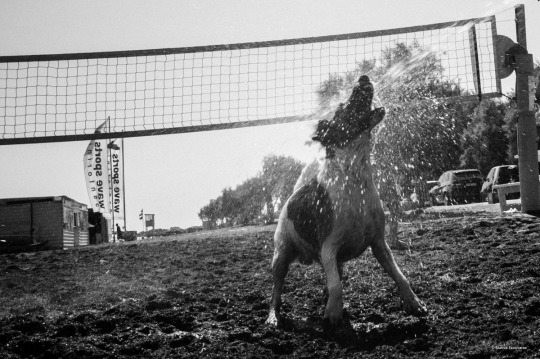
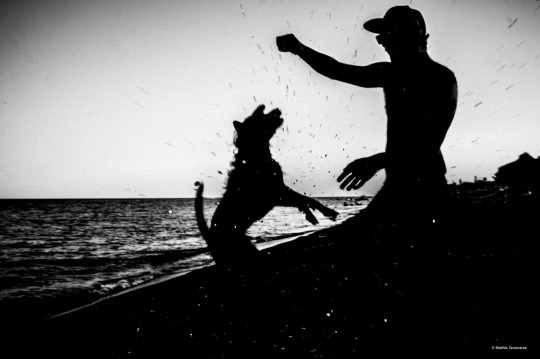

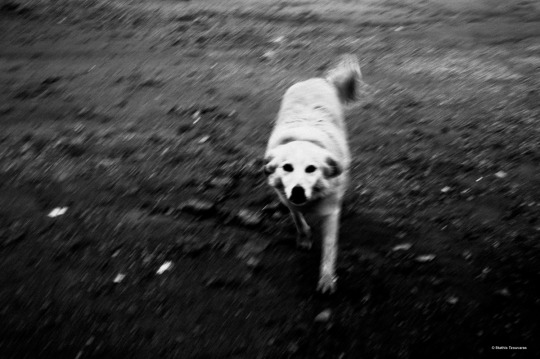
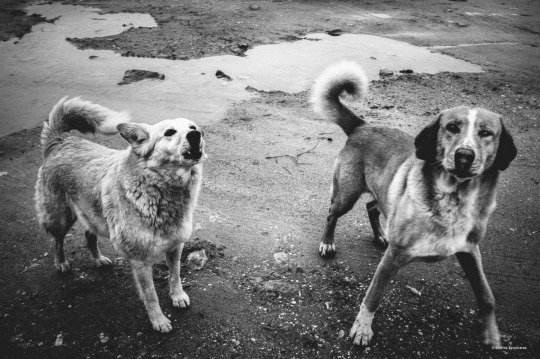
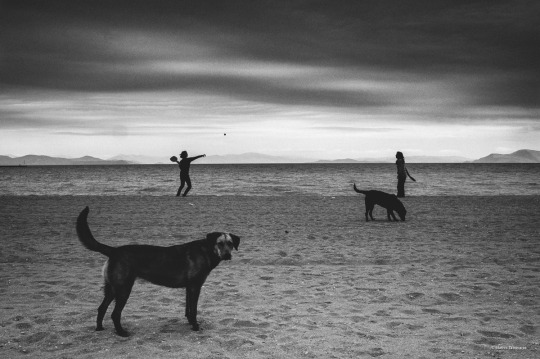

#stathis tzouvaras#tzouvaras#Black and White#noir et blanc#monochrome#monocronatico#dogs#people#photography#greece#animals#animaux#cien
5 notes
·
View notes
Photo
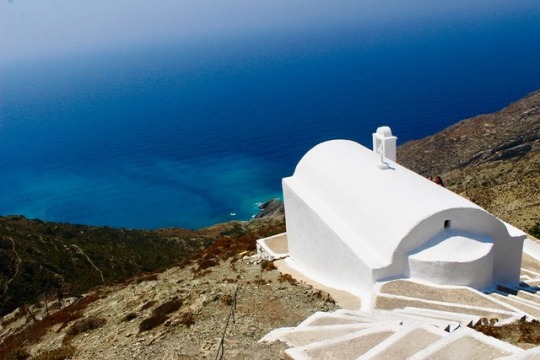
Karpathos. Olymbos
Photo by Giorgos Tzouvaras
40 notes
·
View notes
Photo
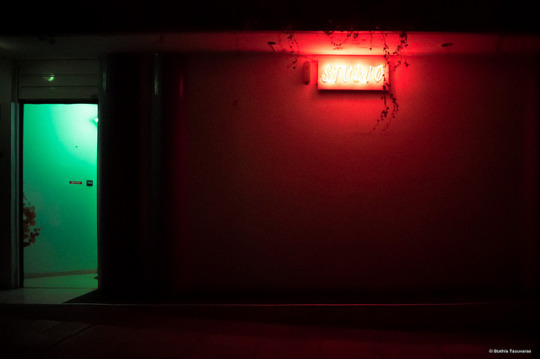
Stathis Tzouvaras
471 notes
·
View notes
Photo








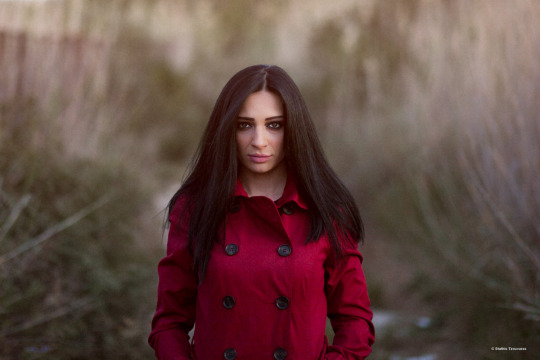

2 notes
·
View notes
Photo
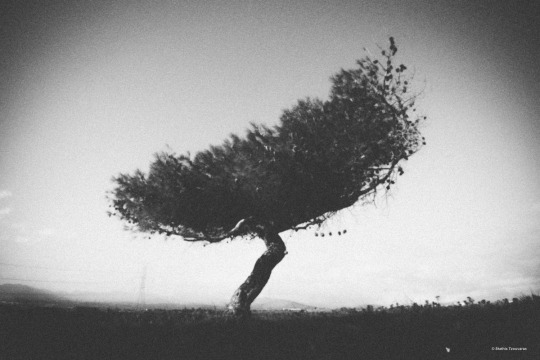


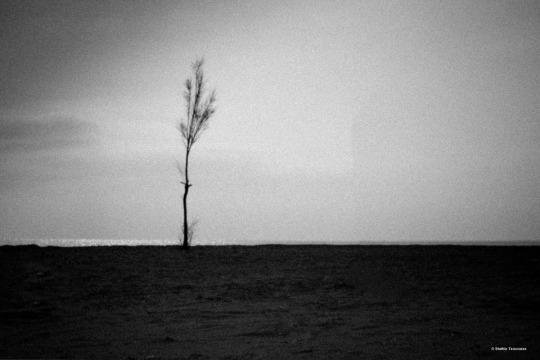
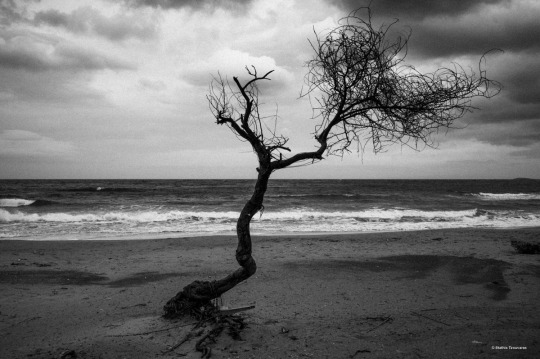
#Stathis Tzouvaras#Tzouvaras#photography#Black and White#noir et blanc#monochrome#monocromatico#trees#nature#landscape
18 notes
·
View notes
Photo


1 note
·
View note
Photo

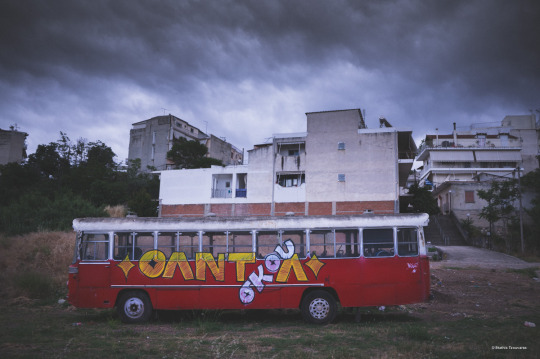
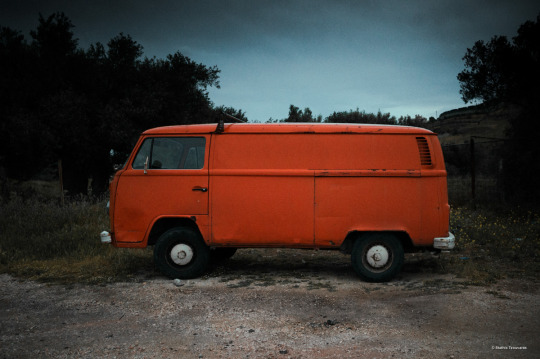







#stathis tzouvaras#tzouvaras#car#old car#color#colori#couleur#old#photography#ΣΤΑΘΗΣ ΤΖΟΥΒΑΡΑΣ#ΤΖΟΥΒΑΡΑΣ#fotografia#urban
1 note
·
View note
Photo





10 notes
·
View notes
Photo




#Stathis Tzouvaras#Tzouvaras#woman#beauty#people#portrait#photography#ΣΤΑΘΗΣ ΤΖΟΥΒΑΡΑΣ#ΤΖΟΥΒΑΡΑΣ#ΓΥΝΑΙΚΑ#ΦΩΤΟΓΡΑΦΙΑ#ΑΝΘΡΩΠΟΙ
4 notes
·
View notes
Photo
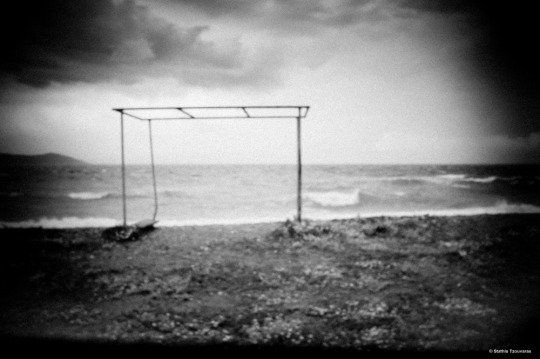
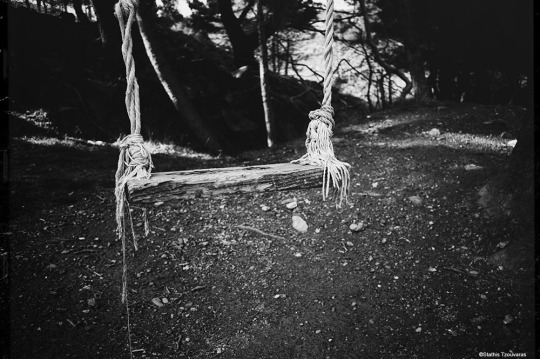
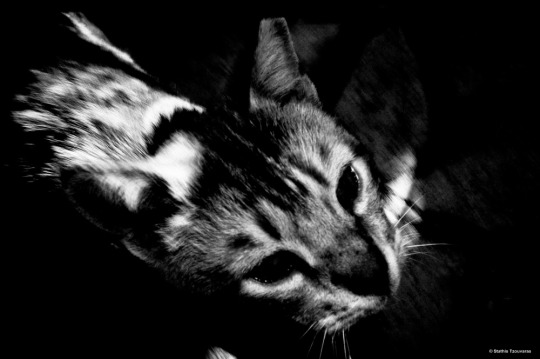

19 notes
·
View notes
Photo
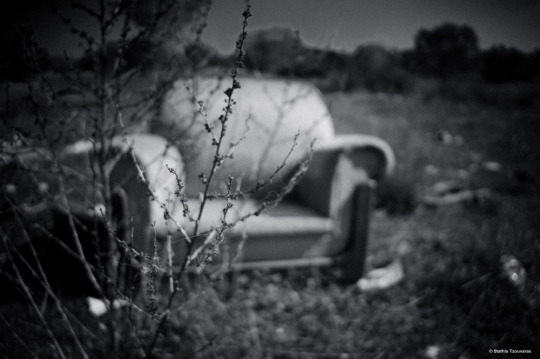
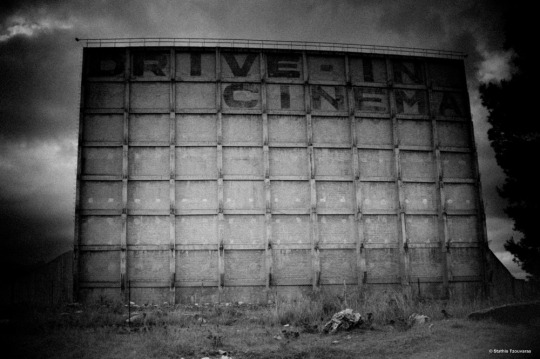
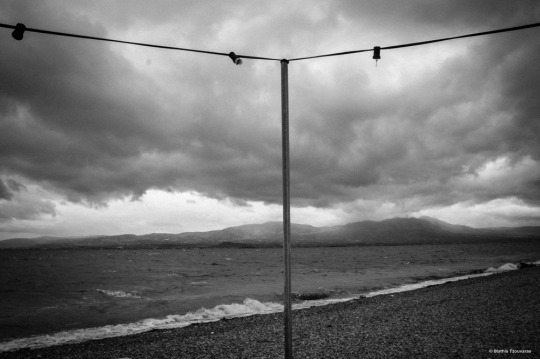
2 notes
·
View notes